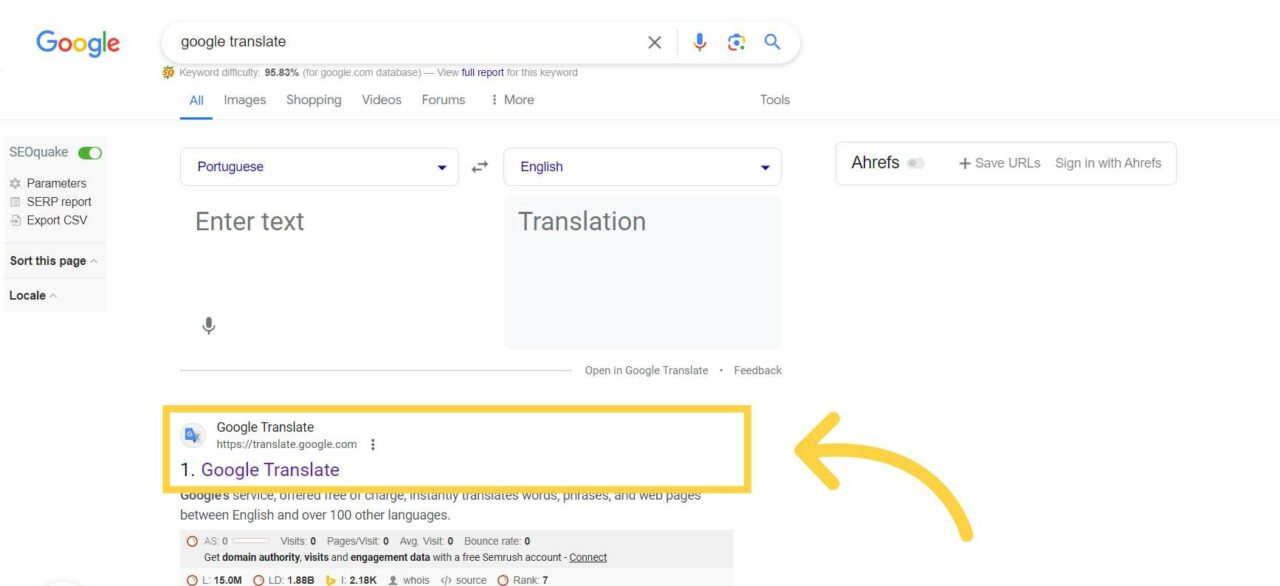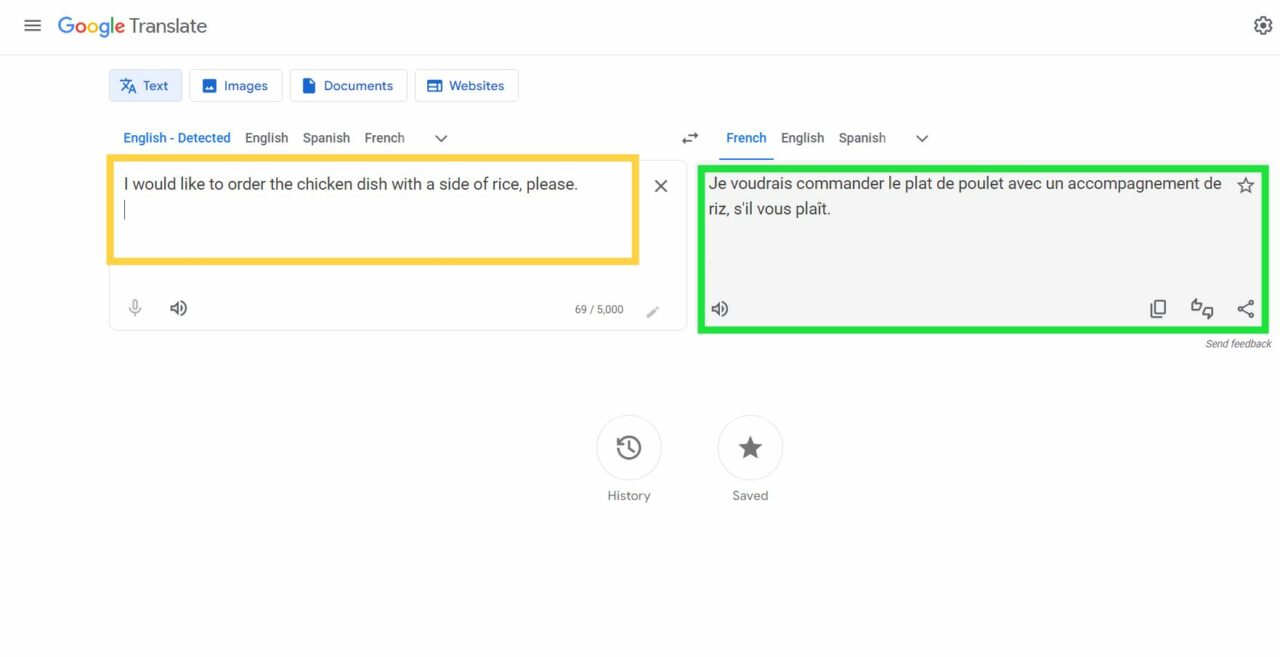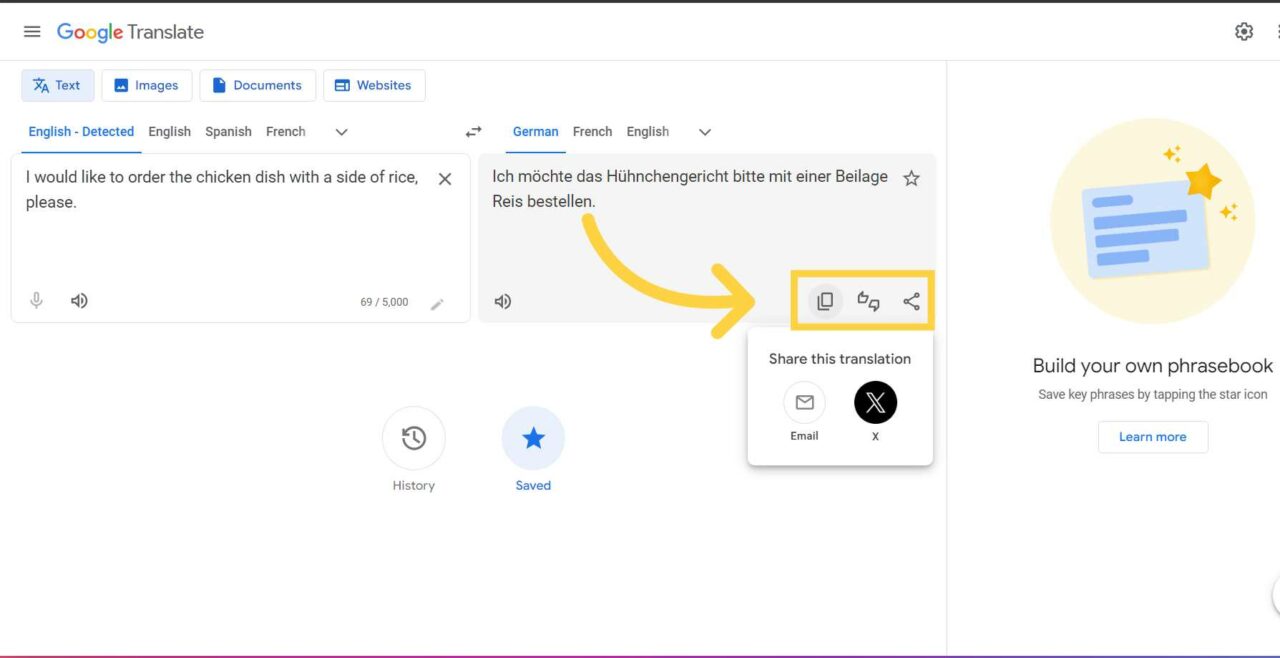The world is becoming increasingly interconnected, and language barriers can often hinder communication and understanding. By learning how to use AI tools to translate text, you can break down these barriers and foster smoother communication across languages.
Artificial Intelligence offers a range of benefits, from instant translation of large volumes of text to consistent quality and affordability
Want to begin translating the easy way? Keep reading to find out how.
How to use AI Tools to Translate Text – Step-by-Step Guide
Using AI tools for text translation can streamline communication and enhance understanding across different languages. Follow these steps to leverage AI-driven translation solutions effectively.
Step 1: Choose the Right AI Translation Tool
Step 2: Access the Translation Tool
Step 3: Input the Text for Translation
Step 4: Select the Target Language
Step 6: Review and Edit the Translation
Step 7: Save or Share the Translated Text
Step 1: Choose the Right AI Translation Tool
Research and select an AI translation tool that suits your needs. Popular options include Google Translate, DeepL, and Microsoft Translator, which offer a wide range of language support and robust translation features.
Step 2: Access the Translation Tool
Open the chosen translation tool via its website or download the corresponding app on your device. Ensure you have a stable internet connection for accurate and real-time translations.

Step 3: Input the Text for Translation
Copy the text you need to translate and paste it into the input field of the translation tool. Some tools also allow you to upload documents directly for translation.

Step 4: Select the Target Language
Choose the language you want the text to be translated into from the available options. Most AI translation tools support numerous languages, making it easy to find the one you need.

Step 5: Translate the Text
Click the translate button to initiate the translation process. The AI tool will process the text and provide the translated output in the target language. Google Translate offers real-time translation in 4 different types:
- Speech-to-text translation
- Image translation
- Document translation
- Website translation

Step 6: Review and Edit the Translation
Review the translated text for accuracy. AI translations are generally reliable, but it’s important to check for any context-specific errors or nuances that may need adjustment.
Step 7: Save or Share the Translated Text
Once you’re satisfied with the translation, you can save the text to your device or share it directly through the tool’s sharing options, such as email or messaging apps.

How to Choose the right AI Tool to Translate Text?
With a vast array of AI translation tools available, choosing the right one can be overwhelming. But fear not! Here are some key steps to guide you in selecting the right AI tool while you learn how to use AI tools to translate text:
- Content Analysis: Identify the type of text you’ll be translating. For instance, technical documents benefit greatly from tools offering features like translation memory, termbases (specialized terminology databases), and glossaries.
- Scalability Assessment: Consider your future translation needs. Will you be handling larger volumes of content in the future, or will you need to translate into additional languages? Choosing a tool that can scale alongside your company’s growth is crucial.
- Accuracy Requirements: Determine the level of accuracy needed for your translations. Do they simply need to convey factual information, or should they capture specific terminology and maintain your brand’s unique voice and style?
- Language Support: Select a tool that offers support for all the language pairs you require for communication and content creation.
- Security and Privacy Compliance: Ensure the translation tool you choose meets your company’s security and privacy standards. This is especially important for handling sensitive information.
What are the Best AI Tools to Translate text?
With the rise of globalization, The best AI tools are breaking down language barriers and fostering communication. Here’s a breakdown of some of the Best AI tools to consider when learning how to use AI Tools to translate text:
ChatGPT (Generative AI)
- Pros: Very quick translations, covers over 50 languages, easy to use.
- Cons: Average accuracy, no integrations or option to upload glossaries/style guides, manual text input required.
Copy.ai (Generative AI content creation)
- Pros: Easy to use, translates into over 95 languages, allows brand voice guide upload.
- Cons: Not specialized in translation (content creation focus), no glossary or translation memory, no built-in human translation option.
DeepL (Easy-to-use AI translator)
- Pros: Lifetime free plan with basic features, good accuracy, captures context and nuance, offers Chrome plugin and document translation.
- Cons: Lower accuracy score compared to some, no integrations with project management tools, limited glossary entries on free plan.
Google Translate (Renowned and Widespread Language Support)
- Pros: Free, very easy to use, supports over 130 languages, good for basic translations.
- Cons: Requires manual text input, no integrations or generative AI capabilities.
What are the real world use cases to use AI Tools to translate text?
AI translation tools are breaking down language barriers across industries. Let’s explore how companies are using AI to translate text in real-world applications:
Airbnb: Bridging Borders for Travelers
Imagine finding the perfect Parisian flat – but the description is only in French!
AI translation on Airbnb lets users see listings, reviews, and messages in their native language, making travel planning a breeze across cultures.
Netflix: Bringing the World to Your Screen
Craving a Korean drama but subtitles just don’t cut it? Netflix uses AI to create more accurate subtitles, so you can enjoy international shows without language limitations.
Facebook: A Global Village, One Translation at a Time
With billions of users worldwide, Facebook uses AI translation to bridge the communication gap.
Posts, comments, and messages seamlessly translate into users’ preferred languages, fostering a truly global online community.
What are the Benefits of Using AI Tools to translate text?
AI translation tools are revolutionizing the way we communicate across borders. Here’s how learning how to use AI tools to translate text can benefit you:
- Speed Demon: AI tools translate text instantly, handling massive amounts of content in real-time. Forget waiting days for human translators –– AI gets the job done in seconds.
- Consistent Quality: No more inconsistency! AI translation maintains the same quality every time you use the same tool. Some even use machine learning to continuously improve their accuracy.
- Learns on the Job: Want the AI to understand your specific lingo? Some AI platforms can be trained to use your terminology consistently, making translations even more accurate over time.
- User-Friendly: Using AI translation is a breeze. Simply copy-paste your text, or better yet, use a platform that integrates with AI tools to translate your entire website with a few clicks.
- Breaks Down Language Barriers: Translate content into a multitude of languages with ease. AI saves you the hassle of finding multiple human translators or large agencies –– one tool translates to all!
- Cost-Effective: Machine translation is budget-friendly. Unlike human translation services, affordability is no longer a major concern.
What are the Challenges of Using AI Tools to translate text?
AI translation tools bring the world closer by breaking down language barriers. However, these powerful tools still face some hurdles.
Have a look at these challenges before you learn how to use AI tools to translate text:
- Challenges with Context and Nuance: AI may struggle to translate idiomatic expressions, cultural references, or nuanced language. These subtleties can be crucial for conveying the intended meaning, and their misinterpretation can lead to misunderstandings.
- Accuracy for Technical Jargon: Specialized fields often have unique terminology (technical jargon) that can be challenging for AI to translate accurately. In such cases, human review by a subject-matter expert is often necessary to ensure precision.
- Dependence on Data Quality: The accuracy of AI translation is highly dependent on the quality and comprehensiveness of the data used to train the AI model. Limited or biased data sets can result in inaccurate or misleading translations.
What is the Future of AI in Translation?
The future of AI translation is brimming with promise. Let’s get into the exciting possibilities that lie ahead if you learn how to use AI tools to translate text:
- Real-time Translation Powerhouse: AI’s growing accuracy and reliability pave the way for smooth real-time translation of massive amounts of text. Imagine instant communication without language barriers!
- Human-AI Teamwork: Machine learning and translation technology will become powerful allies for human translators. AI can handle repetitive tasks, freeing up human experts to focus on complex projects requiring cultural understanding and creative language manipulation.
- Progress on the Path to Perfection: While achieving 100% accuracy is still a future goal, AI translation is constantly evolving thanks to rapid advancements in artificial intelligence. This means more practical and reliable translation tools for everyday use.
Explore More How-to Guides
Check out these how-to guides for a dose of inspiration! They’ll help you get creative and master new skills.
- How To Use AI To Prepare For A Job Interview
- How to Use Perplexity AI Pages to Write Articles
- How to Use AI to Plan a Trip
- How To Use AI To Build A Website
- How to write engaging content on pets and animals with AI writing tools
FAQs
Is there a free AI tool for translation?
Can AI translate a PDF?
Is there a device that translates in real time?
How do I get automatic translation?
Wrap Up
AI translation tools offer a world of convenience and possibility for anyone who needs to navigate communication across languages.
By learning how to use AI tools to translate text and considering the strengths of different AI translation options, you can choose the perfect tool for your needs and translate text with ease and confidence.





